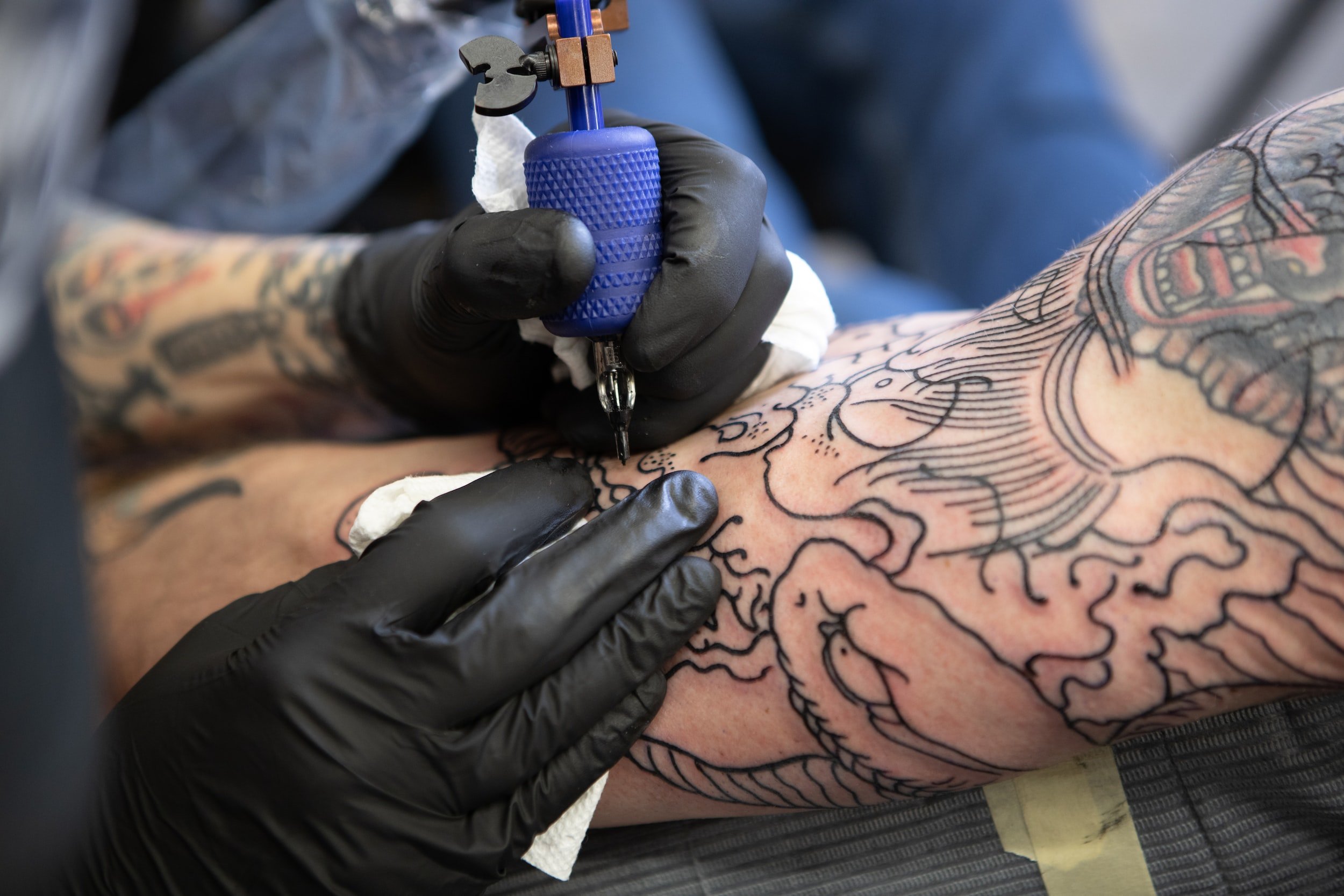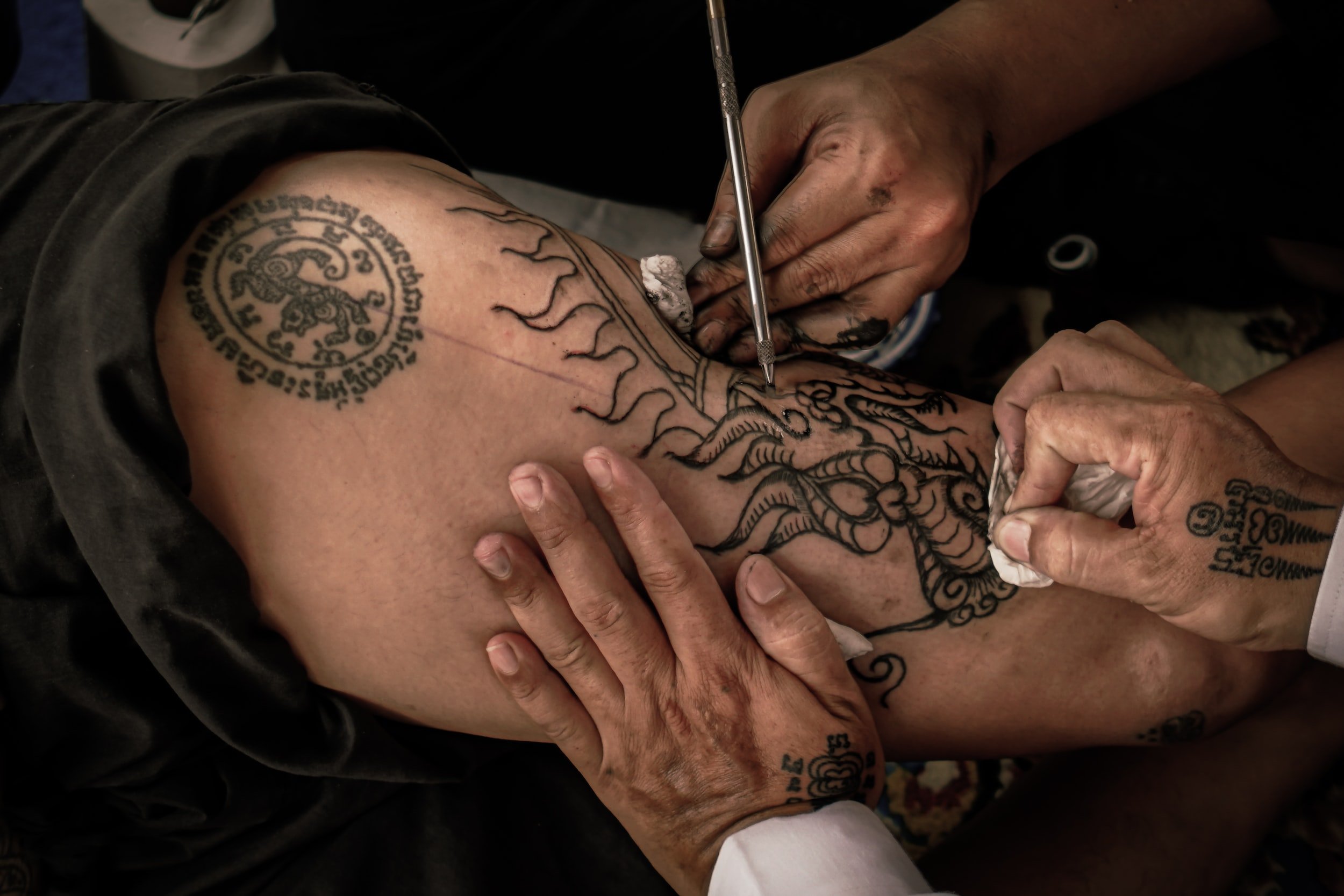Japanese Traditional Tattoo Sleeves: Unlocking the Mystique & Meaning
With their intricate, captivating designs and deep-rooted cultural significance, it's no wonder the Japanese traditional tattoo sleeve has captured the hearts and imaginations of tattoo enthusiasts worldwide. In this blog, we'll delve into the mystique and meaning behind these awe-inspiring tattoos, from the iconic traditional Japanese dragon tattoo to other timeless motifs.
Japanese traditional tattoo sleeves are like wearable masterpieces, each telling a unique story through their vivid colors and intricate patterns. For centuries, these traditional Japanese tattoo designs have held a special place in the hearts of tattoo lovers and connoisseurs alike. But before you book your appointment with the nearest tattoo artist, it's essential to grasp the cultural significance and profound symbolism that make these designs so remarkable.
Ready to unlock the mystique of Japanese traditional tattoo sleeves?
Stick around as we explore the evolution of this ancient art form, reveal the meaning behind popular motifs like the traditional Japanese dragon tattoo, and share expert tips on choosing the perfect design for your own body art journey.
The Evolution of Japanese Traditional Tattoo Sleeves
The evolution of Japanese traditional tattoo sleeves is a fascinating journey that spans centuries. These sleeves, also known as Horimono, have their origins dating back to the Edo period (1603-1867), where they were used as a marker of social status and identity.
Initially, tattoos were only worn by the lower classes, including criminals and artisans. However, over the years, the Yakuza, Japan's notorious organized crime syndicate, popularized tattoos, and the trend shifted to the upper classes. As a result, tattooing became more acceptable as a form of self-expression and art.
The intricate designs and symbols used in the traditional Japanese tattoo sleeve reflect the culture, beliefs, and values of the Japanese people. They often feature mythical creatures such as dragons, phoenixes, and koi fish, as well as cherry blossoms, waves, and clouds. These designs represent strength, courage, good fortune, and the impermanence of life.
In the past, tattoos were associated with criminal activity, and wearers were ostracized from mainstream society. However, there has been a shift in perception towards traditional Japanese tattoo sleeves, and they are now celebrated and appreciated by people all over the world.
The modern revival and appreciation of traditional Japanese tattoo sleeves can be attributed to a few factors. Firstly, advancements in tattooing technology have made it possible to create more intricate and detailed designs. Secondly, the popularity of Japanese pop culture, particularly anime and manga, has exposed people to the artistry of traditional Japanese tattoos. Lastly, the rise of social media has allowed tattoo enthusiasts to connect and share their love for traditional Japanese tattoos, helping to spread awareness and appreciation for this art form.
Traditional Japanese Dragon Tattoo: Symbolism and Significance
Traditional Japanese dragon tattoos are not just aesthetically beautiful but are also fascinating due to their deep cultural significance. In Japanese mythology, dragons, or "Ryū," were considered divine creatures with the ability to fly and control the elements of wind and water. They were also believed to be fierce protectors of Japan.
Japanese traditional dragon tattoos are known for their intricate and detailed designs. The dragon is usually portrayed with a serpentine body and sharp teeth. Traditionally, these tattoos were found on the backs of powerful individuals, such as samurais and warriors, symbolizing their strength and power.
One of the unique features of Japanese traditional dragon tattoos is the use of bright and contrasting colors such as black, red, and gold. The tattoo artists are highly skilled and use different techniques to create the intricate designs. The tattoos are often accompanied by other traditional Japanese symbols such as cherry blossoms, waves, and clouds.
The meaning behind Japanese traditional dragon tattoos is significant. The dragon symbolizes wisdom, strength, and supernatural powers. It also represents the four elements of nature: earth, water, air, and fire. The Japanese traditional tattoo is believed to bring good fortune, protect from harm, and ward off evil spirits.
Popular Motifs in Japanese Traditional Tattoo Sleeves
One of the most popular motifs in these tattoos is the koi fish, which has long been associated with perseverance and determination.
Legend has it that a koi fish once swam up a waterfall to reach the top, where it transformed into a dragon. This makes the koi fish a symbol of perseverance, hard work, and ultimately, success. Japanese back tattoos featuring koi fish often depict the fish swimming upstream, surrounded by waves and flowers.
Cherry blossoms are another popular motif in traditional Japanese tattoo sleeves. The fleeting nature of these flowers reminds us of the impermanence of life, and how important it is to cherish every moment. Cherry blossom tattoos often feature delicate pink petals, and are often paired with koi fish or other Japanese symbols.
Samurai are also commonly depicted in a traditional Japanese back tattoo. These legendary warriors embodied honor, loyalty, and strength. Samurai tattoos often include intricate armor, swords, and other symbols of their warrior status. They are a powerful reminder of the importance of courage and resilience in the face of adversity.
And, oni (demons) are a popular motif in Japanese tattoo sleeves, representing the struggle between good and evil. Oni tattoos often feature fierce, horned creatures with red skin, which are meant to intimidate evil spirits and protect the wearer from harm.
The Art of Irezumi: Techniques and Styles
Irezumi, or traditional Japanese tattoos, have a rich history that dates back over 10,000 years. Throughout the centuries, Japanese tattoo artists have honed their craft, passing on the traditional tebori method from master to apprentice. Today, modern innovations have emerged in the field of Japanese tattoo artistry, but the age-old methods remain respected and revered.
If you're looking to get an Irezumi tattoo, it's important to select an experienced tattoo artist who has mastered the traditional tebori method. This process involves using a bamboo or steel needle to manually poke ink into the skin, creating a unique and visually stunning piece of art. The hand-poking method takes time and skill, but the end result is a tattoo that is both beautiful and meaningful.
Fortunately, if you're searching for "Japanese traditional tattoo artists near me," you'll find a wealth of talented artists across the country who specialize in the art of Irezumi. These artists have spent years perfecting their craft, and they're passionate about preserving the traditional art form for future generations.
In addition to the traditional tebori method, modern innovations have also emerged in Japanese tattoo artistry. Some artists use electric tattoo machines to create intricate designs with greater speed and precision. Others add vibrant colors and unique shading techniques to create a more modern twist on the traditional art form.
Choosing the Right Japanese Traditional Tattoo Sleeve for You
Japanese traditional tattoos have been around for centuries and are celebrated for their intricate designs and symbolism. Choosing the right traditional Japanese tattoo sleeve can be a challenging decision, but it doesn't have to be stressful. Here are some helpful tips to ensure that you end up with a meaningful and stunning tattoo.
1. Understand your personal significance: Traditional Japanese tattoo designs are steeped in meaning and symbolism. It's essential to take the time to research and understand the different motifs and themes associated with them. Think about what strikes a chord with you and the story you want your tattoo to tell. Some of the most popular designs include koi fish, dragons, cherry blossoms, and samurai warriors.
2. Collaborate with your tattoo artist: Once you've decided on the motif or theme, it's time to collaborate with your tattoo artist. It's vital to find an artist who specializes in traditional Japanese tattoo designs and has a deep appreciation for the art form's cultural significance. Listen carefully to the artist's suggestions and feedback during each step of the design process. They will help you create a unique and meaningful tattoo that will stand the test of time.
3. Consider the placement of your tattoo: The placement of your tattoo is just as important as the design itself. Think about where you want to place your tattoo, whether it's for personal or professional reasons. Ensure that it compliments your body type and meets any dress code requirements.
4. Take care of your tattoo: Now that you have invested time and effort in choosing and creating the right tattoo, it's essential to take good care of it. Follow the aftercare instructions provided by your tattoo artist and avoid exposing your tattoo to direct sunlight until it's fully healed.
Traditional Japanese tattoo designs are timeless pieces of art that are sure to leave a lasting impression. When choosing the right tattoo sleeve, it's important to take the time to understand your personal significance, collaborate with your tattoo artist, consider the placement, and take care of your tattoo after it's been designed. With these tips in mind, you're sure to find the perfect traditional Japanese tattoo sleeve that represents your unique personality and story.
Frequently ASKED questions
-
A: Japanese sleeve tattoo is called Irezumi.
-
A: It is OK to get a traditional Japanese tattoo as long as you respect the cultural significance, consider the potential social stigma in Japan, and choose a reputable artist. Be mindful of the design's meaning and placement, and avoid appropriating sacred symbols without understanding their context.
-
A: A yakuza tattoo is called Irezumi.
READ MORE…
Discover the meaningful art of Japanese traditional tattooing.
Check out the Japanese tattoos: the beauty and meaning behind them.
Read up our article on Japanese tattoos - traditional strength and beauty.
Check out these Japanese-inspired tattoos: their meanings and how to get them.




